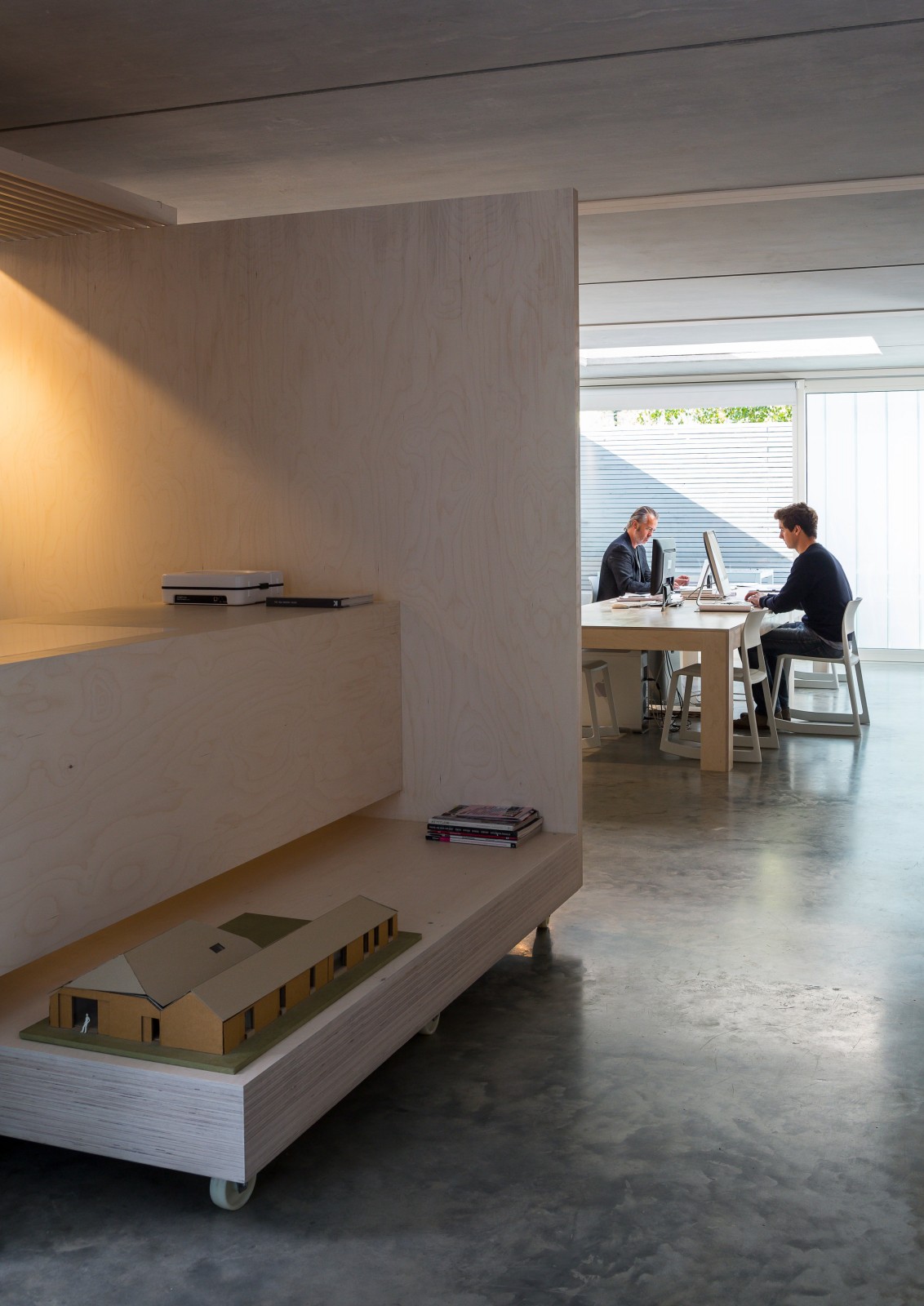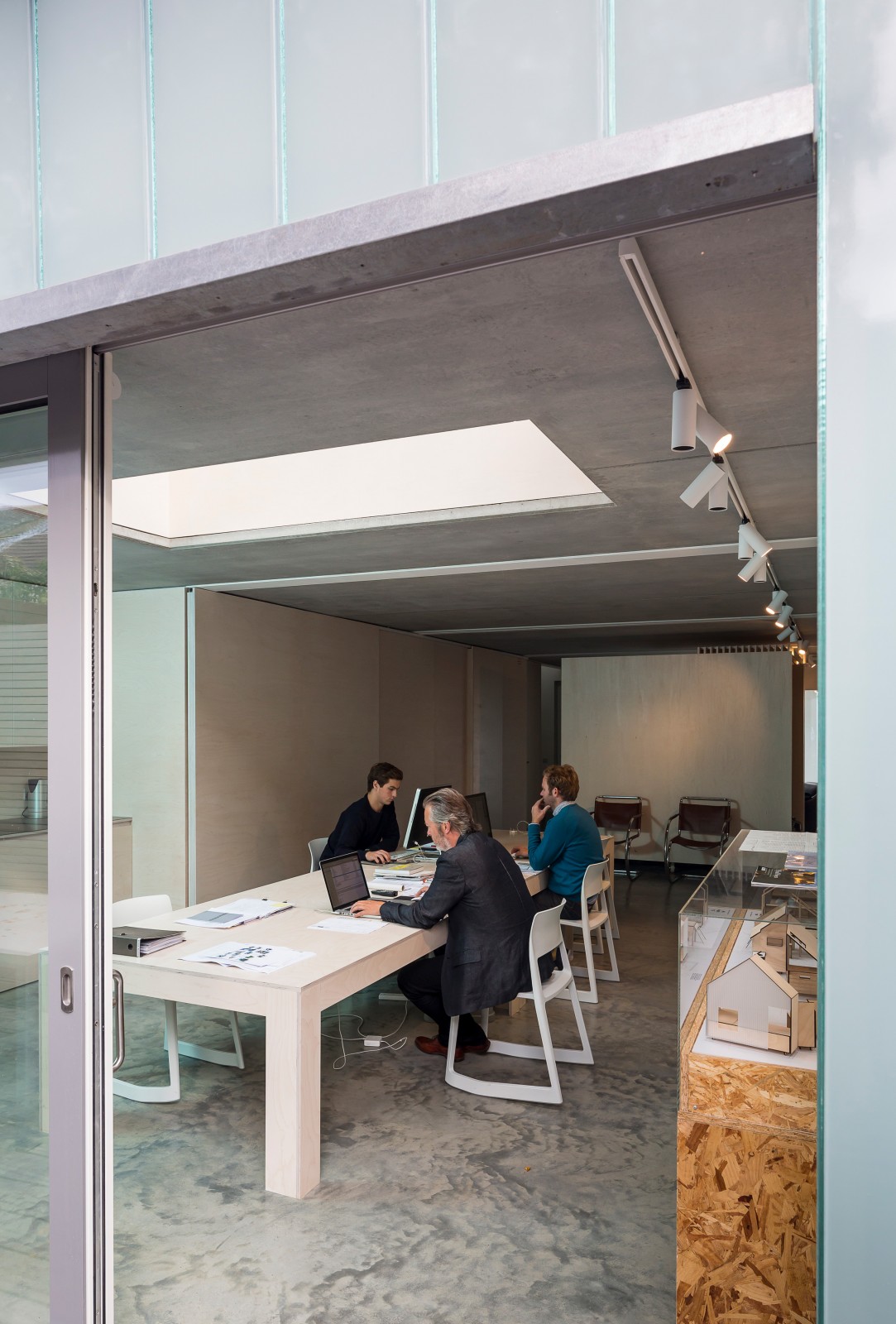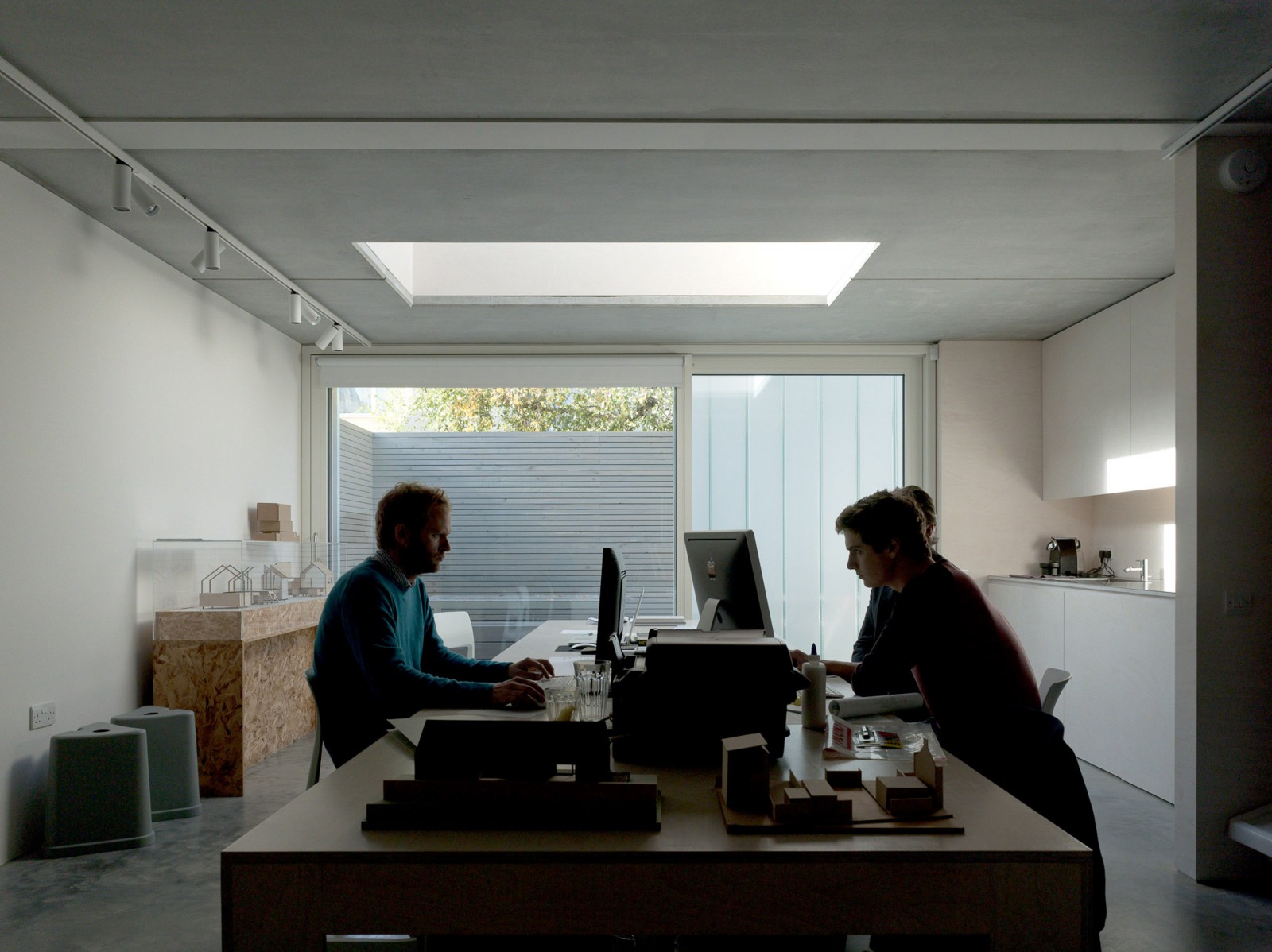Words:
Carl Turner
Photography:
Tim Crocker
The idea of working at home is not a new one, but like so many apparently simple activities that were once commonplace, mixing home and work somehow became an abnormality.
Perhaps IT is bringing about a quiet revolution in the balance of workplace versus home, and a technological cottage ‘Industrial Revolution’ is taking place. The analogy makes sense: we had in mind the weavers’ houses of Spitalfields as a model for our own Slip House project and our quest for a new flexible typology.
Local authority planning departments like labelling this ‘live/work’ to attract premium rates – and special bin collecting arrangements – but it doesn’t have to be so complicated. This is cynical profiteering and it’s one of those little things that if rethought could make a huge difference.
Jane Jacobs’ The Death and Life of Great American Cities covered this ground in 1961, arguing for a vital, mixed-use city centre. Zoning and regulation beloved of the British seemingly put paid to this in the UK. Now, however, the internet has been stealthily eroding the status quo for the past few years, enabling people to make transactions and do business from their own homes. The ebay culture is unstoppable, and will change how we live and work forever. More home working can enliven neighbourhoods. Local shops, cafes, parks and streets themselves will be reinvigorated alongside a reduction in commuted travel. This model also allows for a better work-life balance and less reliance on nurseries and childcare.
Designers of buildings, especially housing, need to rethink the type of homes and places people need to live a good life, including adaptable space to work. Living over the shop is a metaphor for this flexibility.


